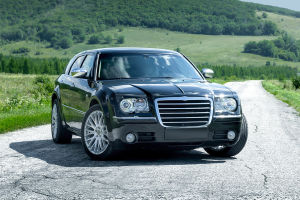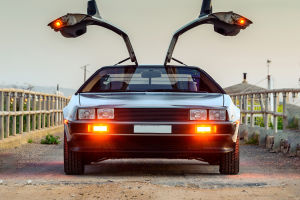Future Motorcycle
The future development of motorcycles will follow the pace and rhythm of automotive development, with electrification extending into the world of motorcycles.
In addition to electrification, intelligence will also become a direction for the future development of motorcycles.
More comprehensive driving assistance systems, helmets with virtual reality technology, safety airbags, and so on are all worth looking forward to.
Augmented Reality Technology
Augmented reality (AR) technology—visual technology that integrates virtual information into the real environment. Examples include aircraft HUD (Head-Up Display). Its application in the civilian sector is also limited, such as Mercedes-Benz using AR technology in production cars for navigation, etc.
A company called Jarvish once crowdfunded a motorcycle helmet with AR technology in 2018, called Jarvish X-AR. This helmet connects to the phone via WiFi and Bluetooth, with a HUD display inside the helmet that can project navigation information, weather conditions, incoming call information, etc., in front of the rider's eyes. Unfortunately, this product was not officially released for sale.
In the future, with the development of technology, AR technology will likely be applied to motorcycle helmets, and information related to driving will appear in front of the rider at any time, providing a new riding experience while also making riding safer.
Enhanced Intelligent Driving
The widespread use of radar enables cars to easily achieve Level 2 autonomous driving, and the widespread use of radar on motorcycles is imminent.
As early as 2018, Ducati announced the launch of models with front and rear radar systems, and in 2020, they launched the Multistrada V4. KTM, Kawasaki, and BMW have also announced their plans to launch models equipped with radar systems this year, indicating that intelligent driving for motorcycles is imminent.
Taking the Multistrada V4 as an example, its front radar combined with cruise control achieves adaptive cruise control (ACC), allowing it to maintain a stable distance from the preceding vehicle in a follow-up state, while the rear radar provides blind spot monitoring and rear-end collision warnings. In addition, Harley-Davidson is also preparing to transplant emergency braking systems to motorcycles to enhance driving safety.
In the future, with the miniaturization of various radars used in cars, including more advanced active safety assistance systems such as lane-keeping, being expected to appear on motorcycles, the use of laser radar on motorcycles is also not impossible. Then, riders can enjoy the convenience brought by intelligent motorcycle driving while enjoying the joy of riding.
Widespread Use of Safety Airbags
The use of safety airbags in cars is already very mature, while their use in motorcycles is just beginning. This is expected to become a trend in the development of motorcycles, and its presence is believed to save more riders' lives with car safety airbags. Currently, the use of airbags on motorcycles is divided into two types: airbags installed on motorcycles and riding gear with airbags.
The use of airbags installed on motorcycles is not yet widespread. Since 2006, the Honda Gold Wing has been equipped with an airbag located in the fuel tank to reduce the risk of the rider hitting the front windshield or being thrown out of the vehicle in the event of a rear-end collision. To date, the Honda Gold Wing remains the only model equipped with an airbag. Cost and size are reasons limiting the development of on-board airbags, which are not a problem for Honda Gold Wing.
Riding gear with airbags has been available on the market since the 1970s, initially not specifically designed for motorcycles but also for equestrian sports.
Later, safety airbag vests specifically designed for motorcycle riding were introduced. These vests usually need to be connected to the motorcycle via a connecting rope. When a rollover occurs, the connecting rope will trigger the valve, and the carbon dioxide in the cylinder will instantly inflate the polyurethane safety airbag.
These vests may not seem intelligent, so Italian motorcycle gear giants Dainese and Alpinestars have developed their own more advanced airbag riding suits, named D-Air and Tech-Air respectively. They both use a large number of sensors, including accelerometers, gyroscopes, GPS chips, etc., to judge whether danger is imminent through complex algorithms.


